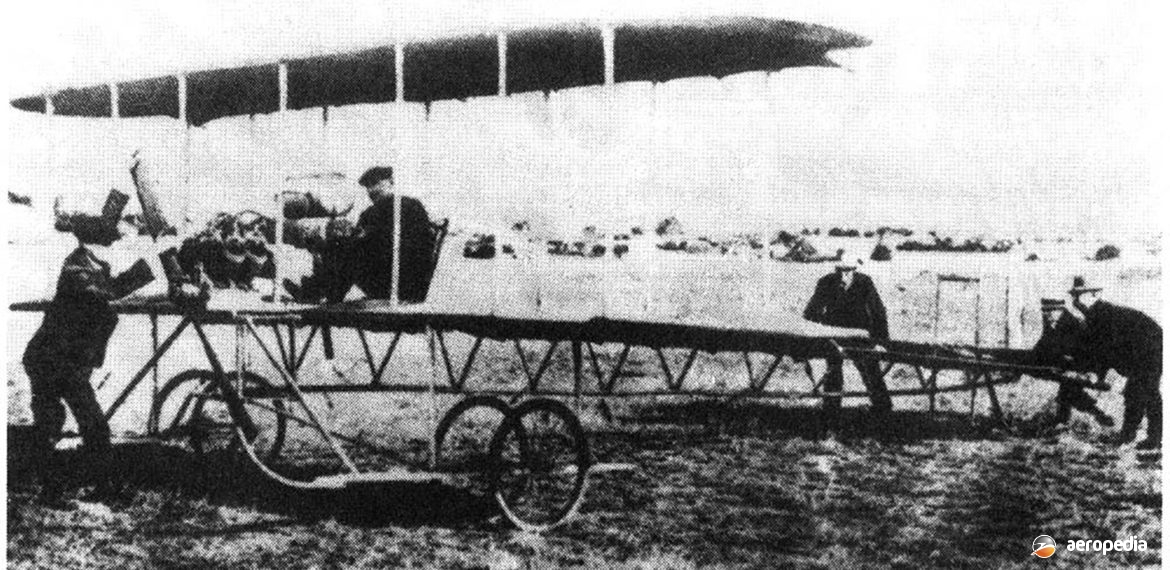Photograph:
The Marshall Aeroplane early in its development in 1909 (Defending Victoria)
Country of origin:
Australia
Description:
Single-seat light aircraft
Power Plant:
One 26 kw (35 hp) JAP four-cylinder VEE air-cooled engine
Specifications:
History:
In 1909 the Australian Government offered a prize of £10,000 ($20,000) for an Australian made aeroplane which would be suitable for what was then considered to be military purposes. A number of conditions were attached, including demonstrating the machine’s capabilities before being accepted as a competitor.
One of the entrants was Lawrence George Hatton ‘Laurie’ Marshall (1884 – 1966) of Alphington, VIC. With assistance of Messrs Walter Henderson and Sydney Panther, he completed a biplane which he had been constructing for some two years, the intention being to enter the aircraft for the prize offered by the Australian Commonwealth Government. His aircraft was at first powered by an engine built in a garage in High Street owned by Mr Aubrey Locke of Armadale, VIC, this being a four-cylinder horizontally-opposed air-cooled unit driving a two-blade laminated propeller, but this engine was found not to be suitable and was replaced. Construction of the airframe took place in a shed adjacent to the Grandview Hotel in Fairfield, VIC. The tailplane was a braced cabana structure top and bottom, with the rudder located behind it. It is believed lateral control was obtained by wing warping.
Many attempts were made to fly but all failed. During the first attempted flight in 1911 the aircraft bumped along the ground for a short distance and stood on its nose breaking the wing and propeller. On this occasion Mr Marshall is reported to have suffered a broken arm. In due course he imported a 26 kw (35 hp) JAP VEE four-cylinder engine from the United Kingdom. On 17 February 1912 the aircraft was taken to open land near the manufacturing site at Fairfield and another attempt to fly was made but this resulted in further damage to one wing and the undercarriage when the aircraft stalled on take-off.
Repaired again, another attempt was made on 14 April 1912 and three successful flights were made, the longest being 46 m (150 ft). This was probably the second Australian aircraft to fly, the first being the Duigan Biplane aircraft some 18 months before. The machine made a further flight in the hands of Mr Marshall at Fairfield on 15 April 1912, and was reported to climb to 9 m (30 ft) and fly a distance of 457 m (1,500 ft) but winds caused the pilot to land the aircraft and prevented further flights. On 3 June 1912 at the Northcote Football Ground, at 4 pm Marshall attempted to demonstrate the aircraft in flight before spectators, but the engine refused to start. An admission charge had been levied on those present, and reports indicate some 1,000 people were in attendance. The public surrounded the aircraft and grew restive at the lack of progress. Police decided it was too dangerous to fly because of the size of the crowd, creditors seized the aircraft and it was later auctioned at the local police station at Northcote. Its ultimate fate is not known.
Marshall went into bankruptcy and is not known to have built any further aircraft. He later attempted to enter politics and gained a Labor Councillor place on the Northcote City Council, serving as Mayor between 1936 and 1937. Efforts to enter State Parliament were not successful. He eventually died in 1966 at the age of 82.

